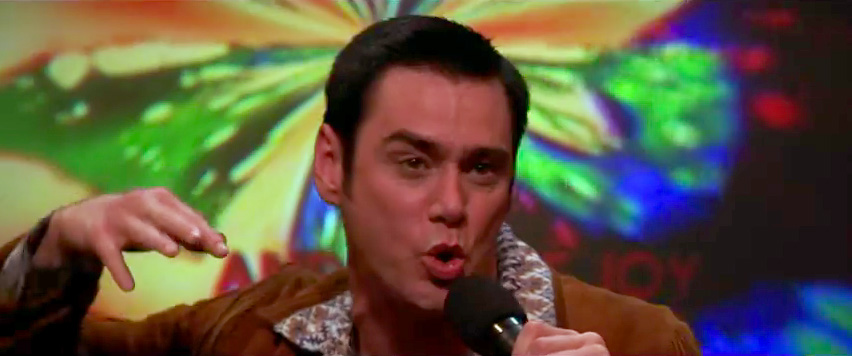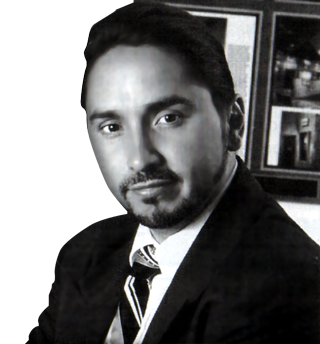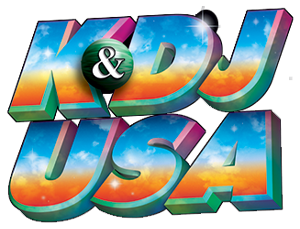Pass The Popcorn… And The Microphone
by Ben Fong-Torres
K&DJ USA Magazine Edition #25 | Nov. 1996
For those of us who love Karaoke, It’s a moment to dread: That first flash, In a movie or a TV show, that we are about to see a scene having to do with Karaoke. Its got to be in a bar or at some big, sloppy party. There’ve got to be drunks. And whoever is doing the singing has got to he doing it poorly.

Hollywood thrives on stereotypes, on cartoonifying everything in its path. And, like it or not, Karaoke is a big, juicy target; an instant laugh-getter.
In The Cable Guy, Jim Carrey did Karaoke. Paul Reiser did it in last season’s Mad About You finale. Saturday Night Live depicted a “Karaoke fanatic.” And it pops up in the parody comedy, High School High.
All moments to dread.
Which brings us to perhaps the bravest man in the Karaoke industry, a man who actually placed Karaoke into the Cable Guy’s masochistic hands; who absolutely welcomes — even seeks — connections between Karaoke and those forces of exploitation in Hollywood and elsewhere.
The Schwarzenegger of Sing-Along is Karl Detken, Music and Video Software Manager at Pioneer New Media Technologies, Inc.
Not only did he make the Cable connection; he’s got Pioneer Karaoke cameos in the next Tom Cruise film, Jerry Maguire, which hits the theaters this holiday season. Pioneer has a scene in Julia Roberts’ next film, My Best Friend’s Wedding and in Greg Kinnear’s post-Dear God effort, A Smile Like Yours. If you saw the season premiere of Suddenly Susan on NBC, with Brook Shields trying to sing “It’s Raining Men” — that was Detken’s doing. His latest effort places a Pioneer Karaoke scene in an upcoming episode of Ned and Stacey.

Why is Karl Detken doing all this? What is he — the Unstable Guy?
Not at all. Detken — and Pioneer—understand the PR dictum, that any publicity is good publicity, and Detken is Pioneer’s point man in its efforts to make “Karaoke” a household word in America.
Those efforts go back to 1988, when Pioneer Electronics introduced sophisticated, high-quality laser disc Karaoke to this country. While the novelty of sing-along got some instant media attention — in the 1989 film, When Harry Met Sally, Billy Crystal tries to woo a woman with a Karaoke number — Pioneer worked hard to get the concept into the mainstream, not only producing standard-setting hardware and software, but supporting such efforts as the nation- ally-syndicated TV show, Karaoke Showcase, and encouraging the use of Karaoke in shows ranging from Cheers to Beverly Hills 90210.
These days, with Karaoke established — and still growing — Hollywood is increasingly interested in taking advantage of its popularity. In fact, so is Madison Avenue. You may recall last year’s Visa commercial featuring stars from the San Francisco 49ers and the Denver Broncos — Steve Young, John Elway, Jerry Rice, and Niners coach George Seifert — making good-natured passes at Karaoke.
To keep the welcome mat out for TV and film producers, Pioneer has tapped Detken, a former accountant and controller who sang and played in a band after hours — and not just any band. In 1991, that ensemble was the Star Search winner in the bands category.
Pioneer hired Detken that year and put him in charge of all Karaoke music and video programming and production. (Today, Detken is marketing manager for not only Karaoke, but DJ and other audio products as well.)
As a musician, Detken found the concept of Karaoke interesting. Yes, he acknowledges, professional musicians could well look down on sing-alongs, and many disliked Karaoke for purely economic reasons: It was replacing live music at some clubs.
“But after seeing what Karaoke does for people in terms of self-esteem — well, if I had those feelings, they were gone soon. I saw it as a therapeutic or a fun outlet for people, to be able to let their hair down.”
Although Pioneer and the film industry had worked together before, the connection solidified after Detken moved from the Long Beach, Calif-based company’s programming and production depart- ment to marketing management.
“At first it was a stroke of luck, of being in the right place at the right time and having networked with people,” he says. “One of those people, from Columbia Pictures, called me up to see if we could provide them with product for a scene they were doing for this movie with Jim Carrey called The Cable Guy.”
Did Detken jump at the chance to hook up with the hottest star in Hollywood? Or was he wary of how the wacked-out Carrey might treat Karaoke?
“I’ve always believed that even though we’d pre- fer that Karaoke be depicted as a fun, wholesome entertainment, we believe the perception and the market identity of Karaoke is not yet instilled in people, so the more we get Karaoke into people’s ears, minds and eyes, the more it’ll become second nature. So, whatever they were going to do with the scene, I was willing to accommodate that.”
As it turned out, the cable guy uses Karaoke as just another weapon in his toolbelt of terror, as Carrey un- leashes a ferocious version of “Somebody to Love” at his customer/victim (played by Matthew Broderick).
For at least one critic — Kenneth Turan of the Los Angeles Times — that scene was one of the few high- lights of the film. “Though Carrey’s manic behavior has an unnverving edge to it,” Turan wrote, “laughing at things like his Karaoke version of the Jefferson Airplane’s ‘Somebody to Love’ is hard to resist.”

After The Cable Guy, Detken began watching for other opportunities.“It’s not as hard or scientific as people might think,” says Detken, who notes that most production companies have what are called “resource acquisition” people who acquire various products to use in movies. “Even with big budgets, their mandate is still to acquire as much product as possible, even household products, and a lot of times they will charge a manufacturer to be in their movie.”
Although Detken says Pioneer would be willing to pay to be in a film if required, he hasn’t yet, partly because of the rapport he has established with producers. “It’s just making contacts and keeping in touch, and when opportunities come, people remember, ‘Oh, yes, Karl, who at the Billboard Awards not too long ago, said he was doing Karaoke’…”
Enough people remembered Detken that Pioneer has hooked up with such potential blockbusters as the films starring Cruise, Roberts, and Kinnear.
“I’m not sure on Jerry Maguire how much of the scene it’s going to be, but it’s with a huge, huge name, Tom Cruise. I’ve seen part of the Karaoke scene in Julia Roberts’ movie coming out next year. The Karaoke is at the wedding reception, and I think that’ll be a nice depiction.”
Detken liked two recent uses of Karaoke (with Pioneer products) that he did not engineer: the Mad About You show in which Paul Reiser and his buddy, drowning their sorrows in song, do a heart-felt, not to mention hair-curling “Your Cheating Heart,” and a Saturday Night Live skit about a Karaoke singer.
As Detken recalls, “It’s a fanatic Karaoke singer who’s got his one song, ‘Fame,’ and goes around to every bar doing the same song — really badly. He goes to one bar and the gal who goes up right before him sings his song. So he’s stuck in a predicament. He’s got all these songs flashing over his head, and he’s wondering what he’ll do. He picks the Anne Murray song, ‘Songbird,’ and he gets up there and completely butchers it. He’s devastated. He’s traumatized. But it’s funny in that you know there are so many Karaoke fanatics who go out and do that, with one song. So for me, it was hilarious.”
In his short time on the Hollywood beat, Detken has learned that a sense of humor is vital. “You can’t take it seriously,” he reasons. “Karaoke is just meant to go out there, let your hair down, and have fun.”
Detken says he’s not alone in having a healthy perspective on Karaoke. Hollywood, he says, is no longer automatically equating Karaoke with bars. “The perception, not only in Hollywood, but nation- ally, has changed over the last year and a half or two,” says Detken, who notes that Pioneer is coming out, over the next six months, with new products geared to the home market. “Our numbers show that more people are buying Karaoke systems for their homes. They’re seeing it as very neat, interactive home entertainment, which is what we always believed in. When it first came over from Japan, it was a family, co-worker type of entertainment. But initially it took off in the bars. Now, I’ve seen a change, and that’s what we’re focused on: increasing awareness, through the media, of what Karaoke is, and educating people about the home environment of Karaoke.”
And that is why, when Karl Detken goes to the movies, he has no moments of dread, and why, if only Pioneer had it among its vast Karaoke library, his own favorite song would be “Hooray for Hollywood.”
About the author: Ben was a DJ at free-form KSAN in the ’70s, while also writing and editing at Rolling Stone (you may remember Ben from the movie “Almost Famous”). He also hosted Fog City Radio on KQED, authored “The Hits Just Keep On Coming: The History of Top 40 Radio” (Backbeat Books, 1998) and wrote Radio Waves — among other things — as a staff writer for The Chronicle in the ’80s and early ’90s. While managing editor of GAVIN (a radio and recording industry magazine), we were lucky enough to also have Ben as a contributor and editor at Karaoke USA Magazine.
